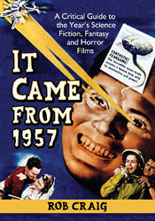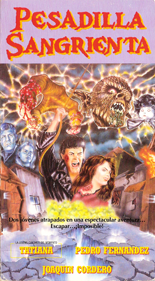
 Epic mullet intact, Pedro Fernández is the lone cast member of René Cardona III’s Vacation of Terror to return for the wonderfully titled sequel, Vacation of Terror 2: Diabolical Birthday, again as Julio. Alternately (and unimaginatively) known as Pesadilla Sangrienta (Bloody Nightmare), this second helping may be an improvement over the original, but let the record show that no one takes a vacation.
Epic mullet intact, Pedro Fernández is the lone cast member of René Cardona III’s Vacation of Terror to return for the wonderfully titled sequel, Vacation of Terror 2: Diabolical Birthday, again as Julio. Alternately (and unimaginatively) known as Pesadilla Sangrienta (Bloody Nightmare), this second helping may be an improvement over the original, but let the record show that no one takes a vacation.
Now under the guiding hand of another director with Roman numerals in his name, Pedro Galindo III, the Mexico-made monstrosity puts Julio in the antiques biz. What to his rapey eyes should appear in his store one day but teen tart Mayra (unimonikered singer Tatiana). He gives her a free plant worth 60,000 pesos in hopes of getting into her pantalones; instead, he gets an invitation to hear her sing that night at the birthday party for her 7-year-old sister, Tania (Renata del Río).
 The shindig is horror-themed — because if there’s one thing all little girls love, it’s monsters — and being thrown at the movie studio owned by their father, producer Roberto Mondragón (Joaquín Cordero, Wrestling Women vs. the Murderous Robot). Mayra takes the stage to belt a tune whose pure pop pep belies such grim, gibberish lyrics as “Boys, boys, boys / Clumsy and aggressive / Poor boys / Neurotics, all lost / Boys, boys, boys / Super guys / Surprised by Sunday crisis.”
The shindig is horror-themed — because if there’s one thing all little girls love, it’s monsters — and being thrown at the movie studio owned by their father, producer Roberto Mondragón (Joaquín Cordero, Wrestling Women vs. the Murderous Robot). Mayra takes the stage to belt a tune whose pure pop pep belies such grim, gibberish lyrics as “Boys, boys, boys / Clumsy and aggressive / Poor boys / Neurotics, all lost / Boys, boys, boys / Super guys / Surprised by Sunday crisis.”
Then Papa Mondragón wheels out a grande-sized strawberry cake, underneath which hides the creepy doll from the first film. Consuming a swiped handful of the cake causes the doll to lose its hair and shed its skin, thus revealing its true self: a goopy demon with horns, tail and all. (Don’t question it.) Tania vanishes within a wall and Julio swoops into he-man mode, strutting around the grounds in a trench coat, as if he were Van Helsing … but played by comedian Paul Rodriguez.
Making cameos in this frivolous spectacle of special effects — “special” as in “special education” — are Tom Cruise and Heather Thomas, albeit via posters: respectively, the Cocktail one-sheet and the smashed-pancake/white-bikini shot that got me all hot and bothered at the onset of puberty. You know, when I was neurotic, all lost, surprised by Sunday crisis. —Rod Lott

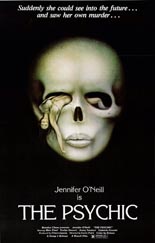
 While driving through a tunnel, wealthy newlywed Virginia Ducci (Jennifer O’Neill,
While driving through a tunnel, wealthy newlywed Virginia Ducci (Jennifer O’Neill, 
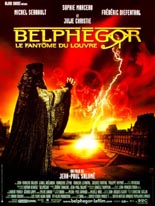
 As he would do in 2004’s
As he would do in 2004’s 
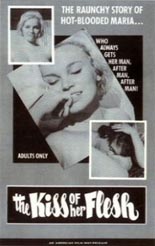
 Boasts slut slayer Richard Jennings at the beginning of
Boasts slut slayer Richard Jennings at the beginning of 

